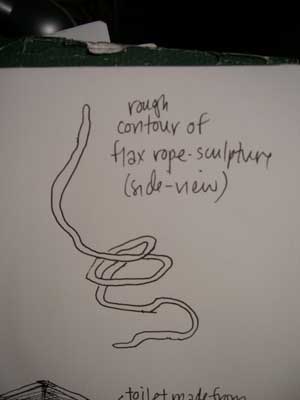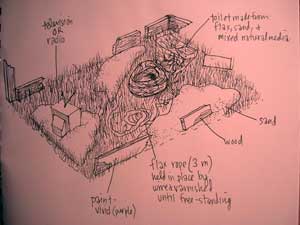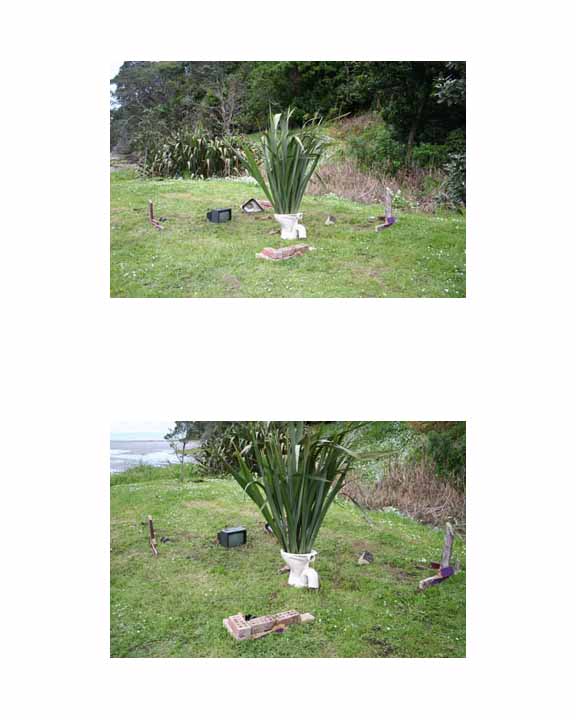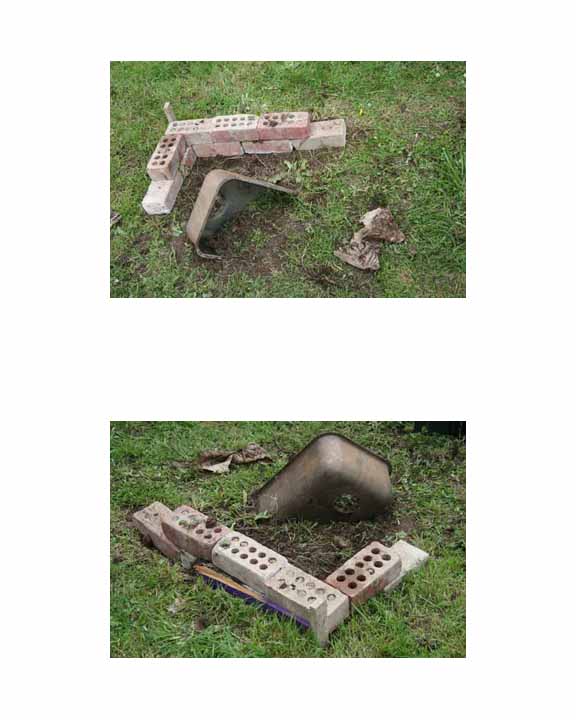| SITE 1 ] | SITE 2 ] | SITE 3 ] | SITE 4 ] | SITE 5 ] | SITE 6 ] | SITE 7 ] | SITE 8 ] | SITE 9] | SITE 10 ] | SITE 11 ] | SITE 12 ] | SITE 13 ] | SITE 14] | ||
 |
SITE 4 ] | ||||||||||||||
Calvin Roby - Isolated (NZ) |
|||||||||||||||
|
-A site that is desolate from the rest of the population. - Public space.
|
|||||||||||||||
|
|||||||||||||||
| PROPOSAL FOR SITE BY: Sherman Straub | |||||||||||||||
80’s Archaeology (an installation, sort of) This project attempts to fabricate the remains of a deserted bach, a type of cottage, drawing from similar existing sites in Wattle Bay. These actual remains are from structures that have been empty for approximately twenty years. The ruins I propose to make consider the role of modern and future archaeologists, speculating on what will survive in importance and as physical ephemera for future researchers. The abandonment of the actual baches in Wattle Bay happened during the 1980’s. From the decade’s culture, I find myself most engaged by the television and the toilet, and potential relationships between the two as objects for an archaeologist to look at.
Here’s everything you’ll need:
- New Zealand flax (as much as easily transportable to the site) and other accessible flora - A television or radio that can sit in some sand - Sand - Wood Build a toilet out of flax and as many other plants as you need. Nothing has to be full scale – as long as it looks like a toilet. Arrange the sand and television as shown in the proposal drawing. Braid a couple of meters of rope from the flax and arrange it as shown in proposal drawing 2 (this is flexible – just make a form that coils slightly and seems to defy gravity). Hold the rope’s position in the air with wire or some other form of armature and brush on as many coats of clear varnish needed for the rope to stay in position alone. Surround the site (following the red rectangle from the original site documentation) with pieces of found wood. The exterior faces should be vividly painted in either purple or a bright crimson.
|
|||||||||||||||
  |
|||||||||||||||
| OUTCOME: | |||||||||||||||
  |
|||||||||||||||